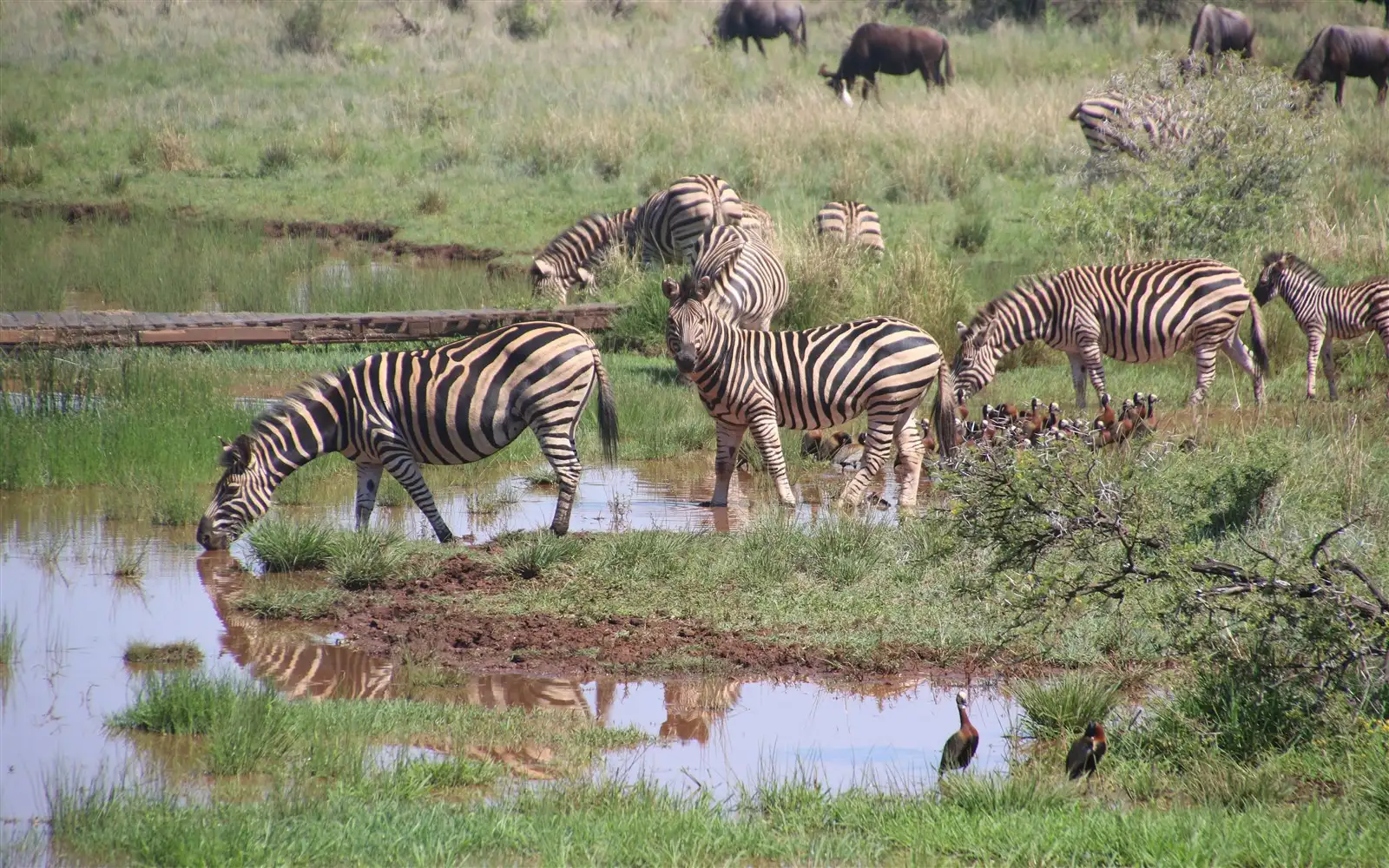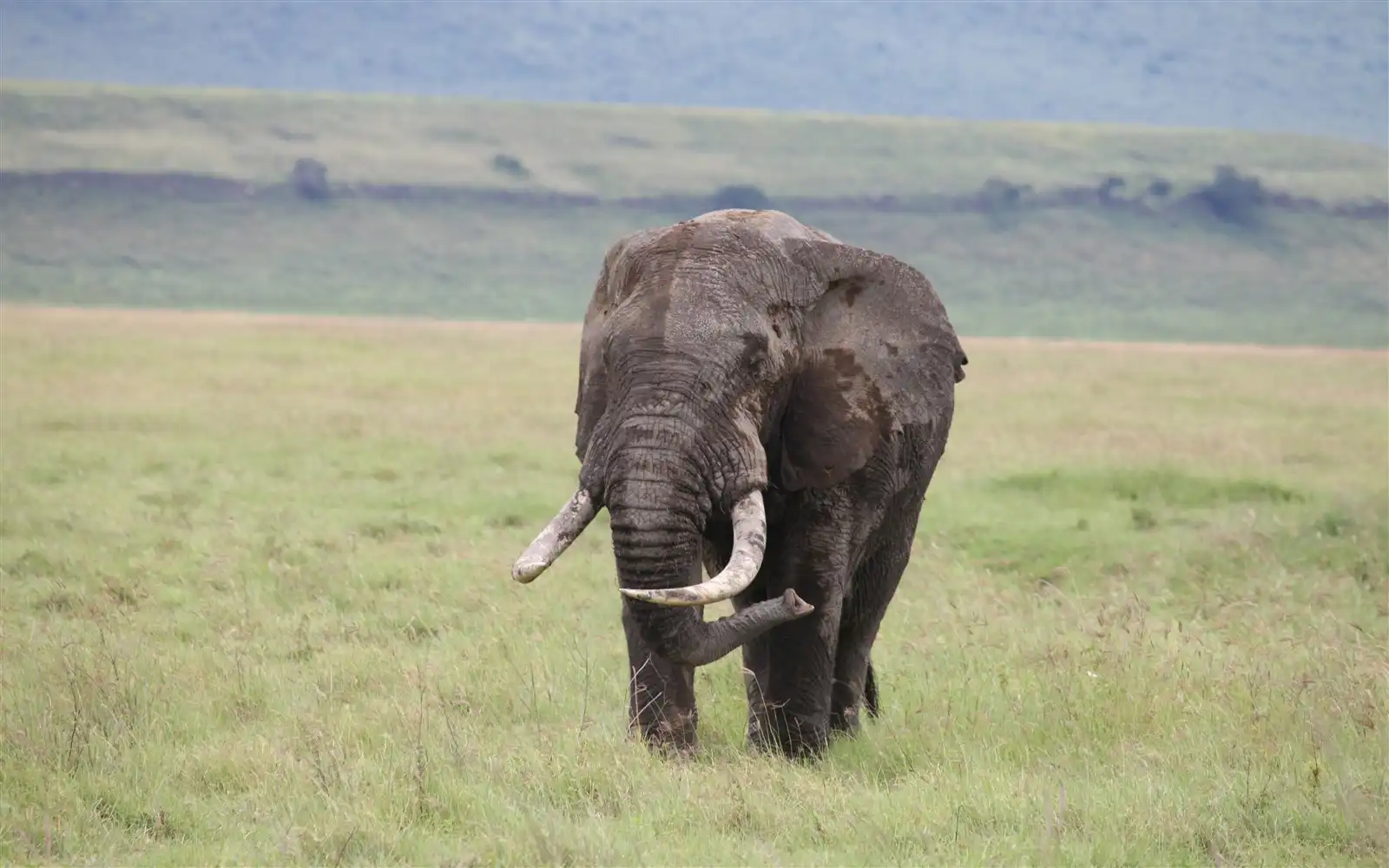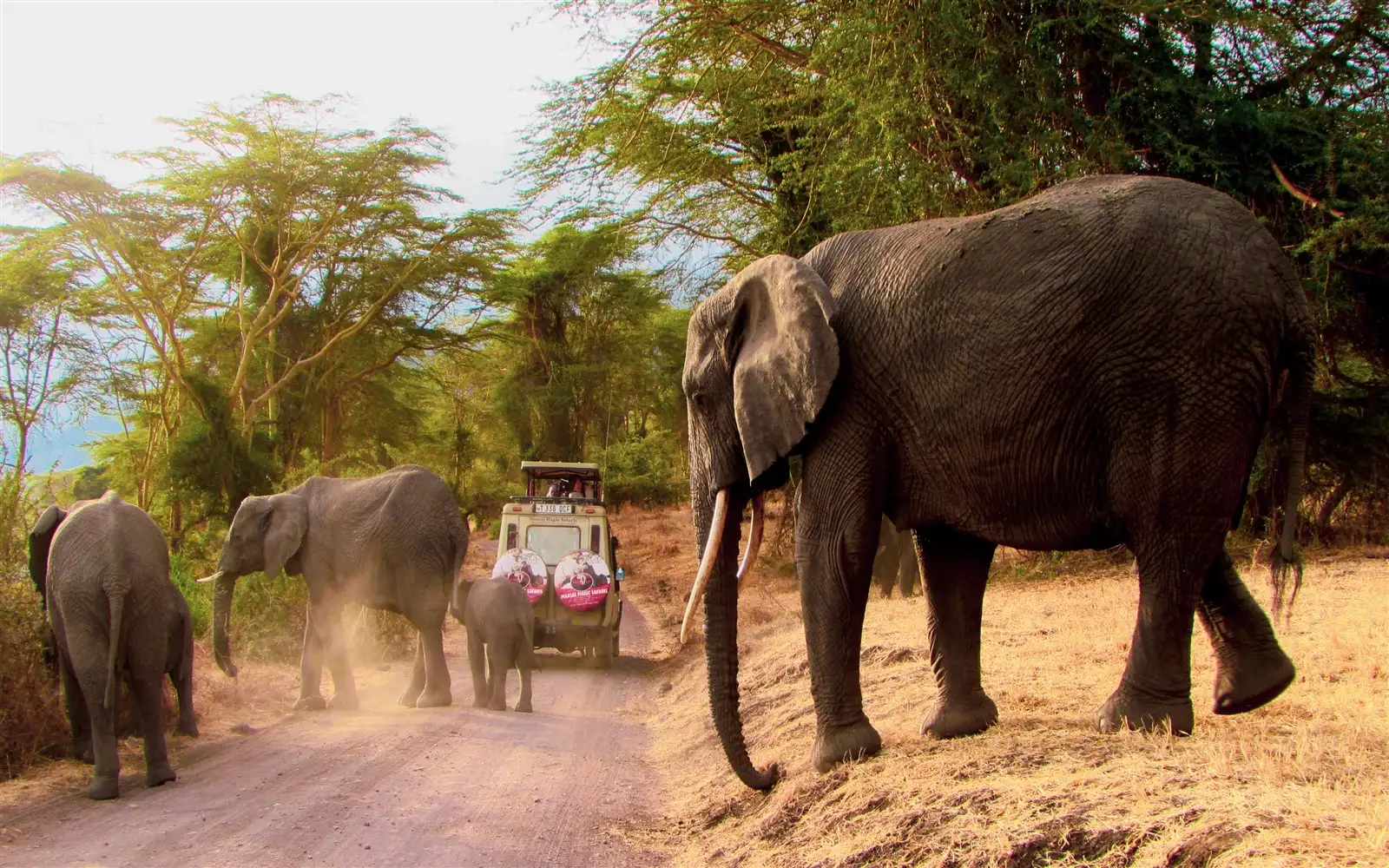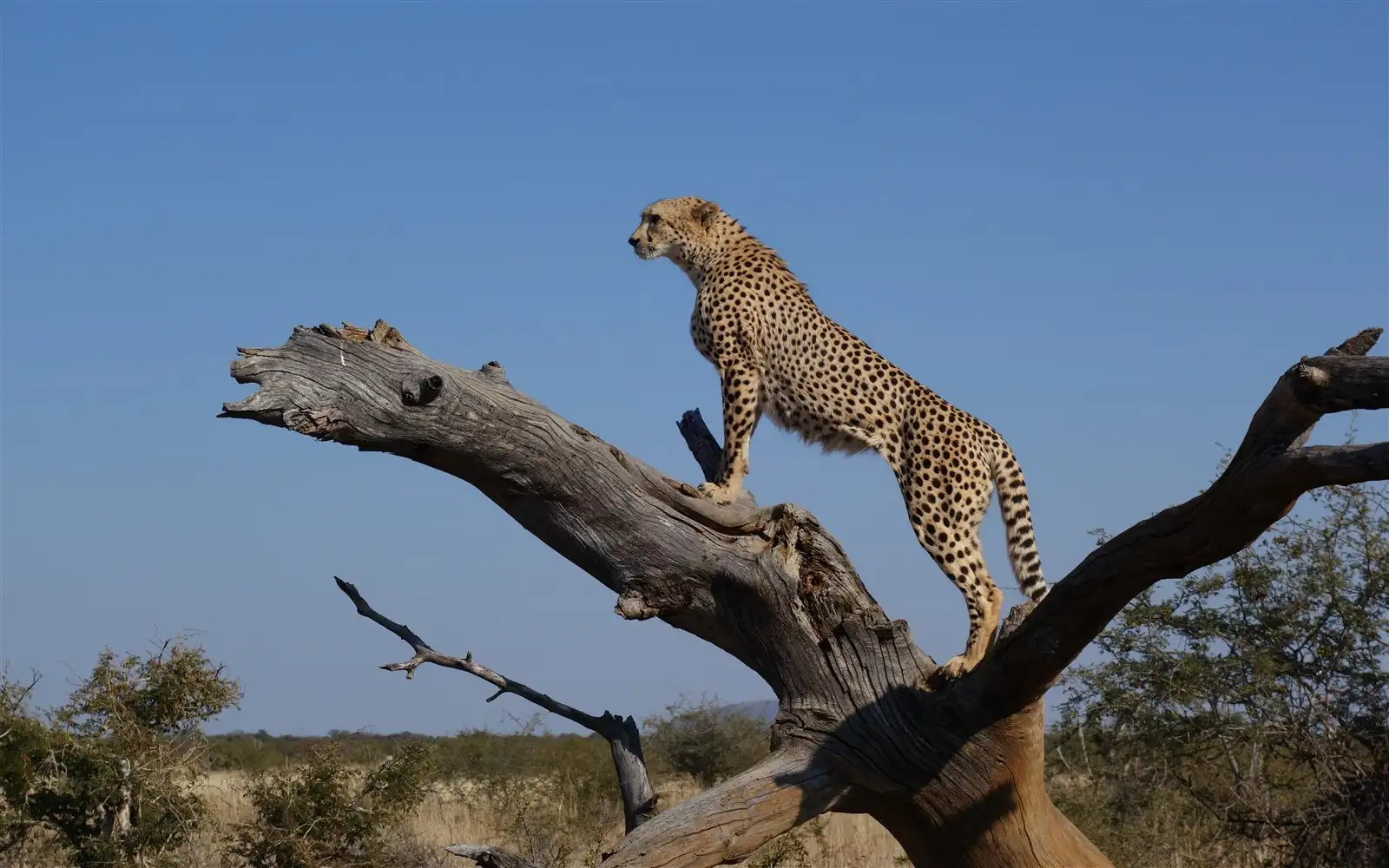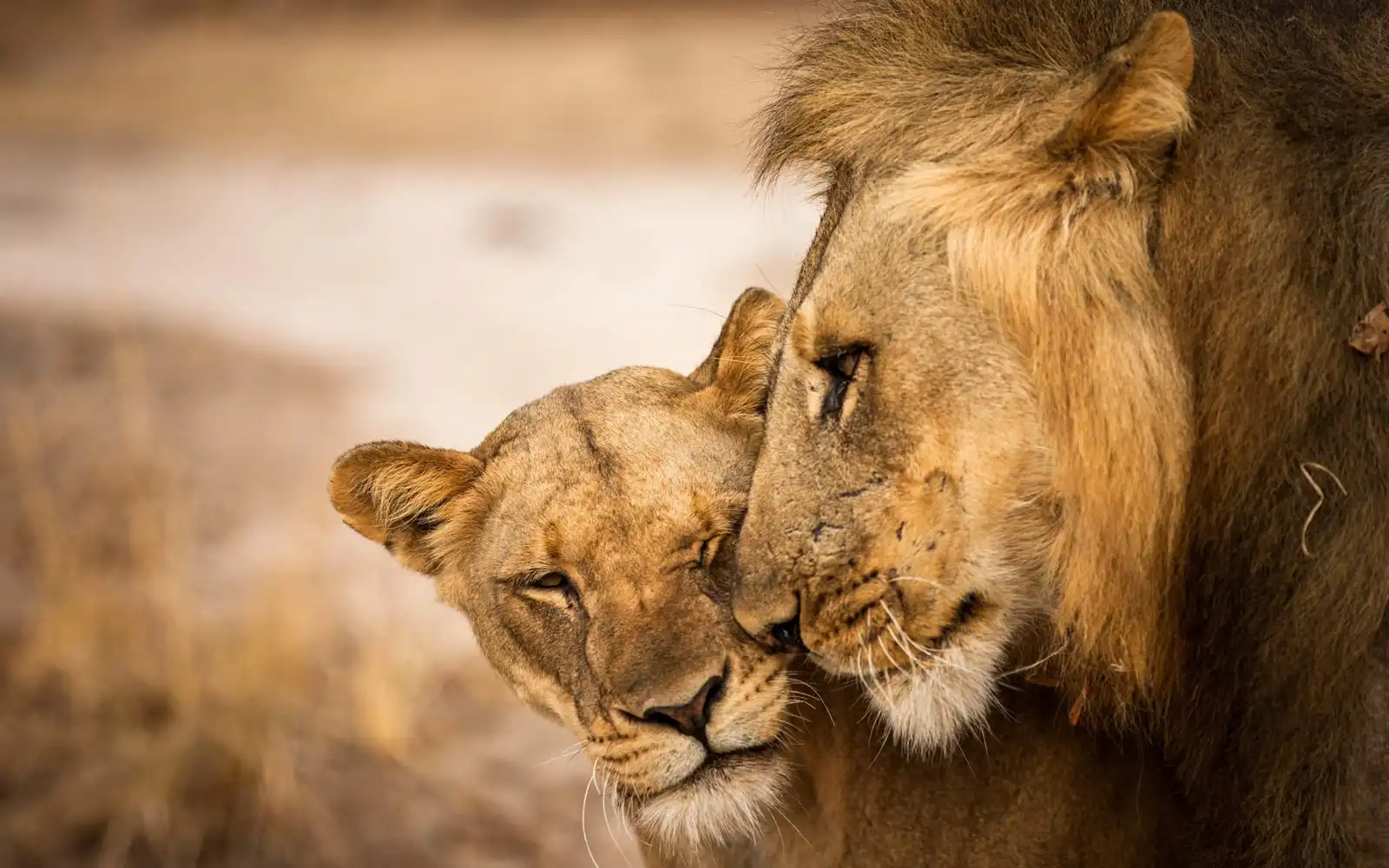
Tarangire National Park
Tarangire National Park
Tarangire National Park is a national park in Tanzania's Manyara Region. The name of the park originates from the Tarangire River that crosses the park. The Tarangire River is the primary source of fresh water for wild animals in the Tarangire Ecosystem during the annual dry season. The Tarangire Ecosystem is defined by the long-distance migration of wildebeest and zebras. During the dry season thousands of animals concentrate in Tarangire National Park from the surrounding wet-season dispersal and calving areas.
It covers an area of approximately 2,850 square kilometers (1,100 square miles.) The landscape is composed of granitic ridges, river valley, and swamps. Vegetation is a mix of Acacia woodland, Combretum woodland, seasonally flooded grassland, and baobab trees.
Tarangire National Park can be reached via paved road south from Arusha in under two hours. Lake Manyara National Park is a 70 kilometer (43 mile) drive from Tarangire.
Wildlife at Tarangire National Park
The park is famous for its high density of elephants and baobab trees. Visitors to the park in the June to November dry season can expect to see large herds of thousands of zebra, wildebeest and Cape buffalo. Other common resident animals include waterbuck, giraffe, dik dik, impala, eland, Grant's gazelle, vervet monkey, banded mongoose, and olive baboon.
Predators in Tarangire include lion, leopard, cheetah, caracal, honey badger, and African wild dog. The oldest known elephant to give birth to twins is found in Tarangire. A recent birth of elephant twins in the Tarangire National Park of Tanzania is a great example of how the birth of these two healthy and thriving twins can beat the odds.
Birds Species at Tarangire National Park
Home to more than 550 bird species, the park is a haven for bird enthusiasts. The park is also famous for the termite mounds that dot the landscape. Those that have been abandoned are often home to dwarf mongoose. In 2015, a giraffe that is white due to leucism was spotted in the park. Wildlife research is focused on African bush elephant and Masai giraffe. Since 2005, the protected area is considered a Lion Conservation Unit.
Tarangire Wildlife Migration
Every year during the dry season from June to November Tarangire hosts a wildlife migration which is not as dramatic as the Wildebeest Migration in the Serengeti, but receives a somewhat large number of animals. As most of this part of the country is dry, the Tarangire River remains the only source of water and consequently attracts large numbers of wildebeests, elephants, gazelles, zebras and hartebeest, buffaloes plus various predators like lions that come to drink and graze around the river banks.
During the rain months of November to May, The zebras as well as large herds of wildebeests move into the north-western direction towards the Rift Valley floor amongst the large numbers of animals that spread across the large open areas of the Masaai Steppe and dispersing all the way to Lake Manyara.
When to visit Tarangire National Park
The best time to visit Tarangire National Park is during the dry season from June to October. These are the best months for wildlife due to migratory patterns, and the short grasses make game viewing even easier.
The animals flock towards the Tarangire river for water, allowing for easy sightings. In order to see the big herds of elephants, we recommend visiting towards the latter period of the dry season (September/October).
November can be especially cheap, as it is out of peak season but tends to still be quite dry before the short rains hit. The low season, from late November to May, is great for bird watching as the area is wet, green and luscious.
